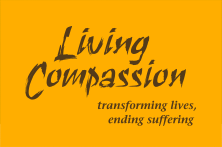One of the most difficult pieces of practice to get is that we are not one, single, monolithic “self” called “I.” It seems so obvious that I am me and I always am and always have been me. And even though I behave in contradictory ways, hold incompatible opinions, and can cycle through a whole range of conflicting emotions in a day—or in a situation—I remain convinced there’s no inconsistency that threatens my “I” solidity. Sure, over the years I’ve changed when it comes to darned near everything in my life: I don’t look the same way, feel the same way, believe the same things, want the same things from decade to decade, but I’m still me, for goodness sake!
Ego-identity is successful at keeping people in that belief because we’re trained not to look too closely at what we’ve been taught to believe. If it seems true and everyone says it’s true, well, that’s good enough.
In awareness practice that’s not nearly good enough. In fact, in awareness practice there’s no such thing as “good enough.” In awareness practice we notice, we look, we see, we scrutinize, we examine. Everything. We do this because we are in the process of waking up from the somnambulant state egocentric karmic conditioning/self-hate has reduced us to. We are finding our way out of the “world of opposites,” the dualistic faux reality that makes an illusion of a self that is separate from Life appear real.
One of the first steps along the path of reclaiming the authenticity we were required to abandon as we moved from innocence to “productive member of society” is to recognize the various aspects of the personality that we gave up in our effort to “fit in and survive.” We re-connect with that little child who was told “you can’t be that way, feel that way, act that way” and was punished and rejected, even though there was absolutely nothing wrong with the being, the feeling, or the behavior. (Attend a There Is Nothing Wrong with You retreat for an “in depth” on this process.)
As we see that young person’s innocence and hurt, two things (can) happen. 1) We realize what happened to that child had nothing to do with the child, and 2) we want to give that child a different life experience.
At this point things can get a bit dicey for a very powerful spiritual “reason.” Almost everyone that hasn’t done a lot of awareness practice believes they are that mistreated child and spends most of their life acting out the ego-identity reaction to what happened to the child. Here's a made-up example: My father was an alcoholic; he would get drunk and hit my mother. I can remember being in a crib or playpen, watching it happen, terrified, not crying because I knew if I cried he’d hit me. Fast forward to me in my forties. I’ve been telling this story for as long as I can remember. That’s what happened to me and I am angry and bitter because my father was a drunk and my mother didn’t protect me.
But, actually, that’s not how it happened. The little child watching is still abandoned there, and “I,” the ego-identity survivor of the situation, tell the child’s story as if it’s mine. (Please stop and take that in; it is life-changing when we see that process.)
So, in awareness practice we learn to move out of the whole egocentric, karmically conditioned, self-hating scene and move into the conscious, compassionate awareness that can embrace the child. (Another way to say this is that we are, once again, the innocence the child never left.)
That’s a simple and straightforward process, except for one thing: the ego-identity that’s been “making a living” off of that story doesn’t want to give it up. “I” gets to be angry. I’ve been victimized! The people who should have cared for me didn’t, and my life is a mess because of them!
If I, the person who practices awareness, am to free the child and heal the trauma, I need to disidentify from that very compelling story and take responsibility for doing what needs to be done. I need to “be the grownup.” I need to let go that ego-identity, move into unconditional love, and care for the innocence embodied as a child.
The good news is that it is an utterly joyful way to live.
Now, a couple of things to consider: First, that “child” (the innocence of authenticity) is perfectly fine. She (in this case) doesn’t need anything, not even unconditional love, but I (the human being waking up and ending suffering) gets to “become” unconditional love and acceptance in order to embrace her. She’s not going to be angry or resentful or blaming—that’s the ego-identity doing that. She doesn’t need to be “made up to” and doesn’t hold a grudge. Here’s the best part: The child doesn’t even know the story of “all the awful things that happened to me.” None of it happened to her—it was just a good story for ego to tell to get support and protection for acting out its victim, blaming, hateful agenda. The innocence the child embodied is now expressed through a grown up living in conscious, compassionate awareness, practicing waking up and ending suffering.
So, the child doesn’t need to “be in the world and be accepted for who she is.” She doesn’t need to go to work or have relationships or be seen or heard. She needs to be embraced in unconditional love and acceptance, and the person who can do that is the disidentified, centered, unconditionally loving human incarnation I still think of as “me.” Is it me? No, it’s unconditional love and acceptance. It’s just being expressed through this form.
Lucky “me,” having a front row seat as all this wisdom, love, and compassion unfolds.
Gasshō
